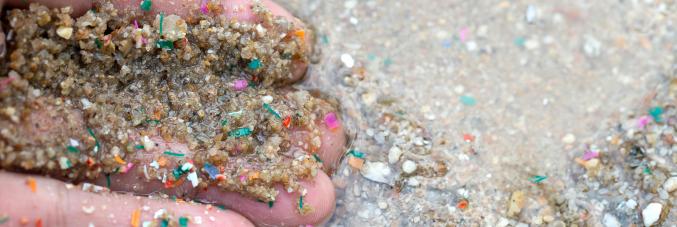
A University of Padua study reveals the mechanisms trapping microplastics in river sediments
22.02.2023
With around 9 billion tons of plastics produced since the mid-twentieth century, the global production of plastics has increased exponentially in recent years, reaching nearly 400 million tons annually, becoming one of the most significant environmental problems above all others. Once released into the environment, plastics undergo further fragmentation due to biological and physical processes. These microplastics are tiny particles that measure from five millimetres to thousandths of a millimetre and are easily dispersed in the seas and oceans, damaging habitats, causing risk to human health and the planet.
Rivers act as plastic conveyor belts that transfer microplastics from the mainland to the seas. During this transfer, microplastics can remain trapped in the sediments for a variable time, absorbing polluted substances or undergoing further fragmentation. For this reason, understanding the mechanisms that regulate the sedimentation of microplastics in rivers must be investigated.
The study Mechanisms of microplastics trapping in river sediments: Insights from the Arno river (Tuscany, Italy), conducted by researchers from the Department of Geosciences of the University of Padua (Massimiliano Ghinassi, Alessandro Michielotto, Francesca Uguagliati, Massimiliano Zattin) and published Science of Total Environment, analysed the sediments of the Arno River (Tuscany) to better understand the mechanisms that control the transport and storage of microplastics in river sediments.
The difference in density between the plastic and the sediments allowed researchers to develop a procedure to separate the microplastics for further study.
Co-author, Massimiliano Zattin, explains, “Our laboratory immersed samples in a liquid of a known density that isolates microplastic fragments. We then analysed these fragments under a microscope and used Raman spectroscopy to describe them. One of the most significant findings is that nearly 90% of microplastics derive from textile materials, which are synthetic fibres.
The overall concentration of microplastic ranges between 0.44 and 5.68 items per gram and is comparable with that of some highly-polluted rivers in the world.
Understanding the mechanisms by which plastic microparticles move and accumulate in our rivers is critical to managing and protecting our resources and ecosystems.



